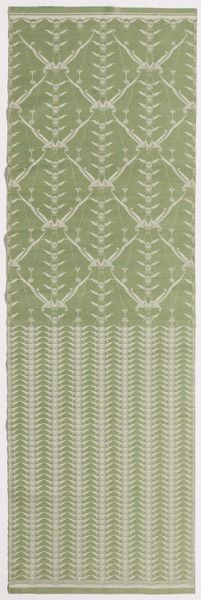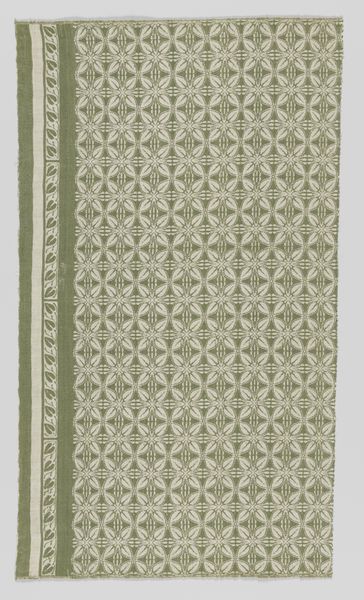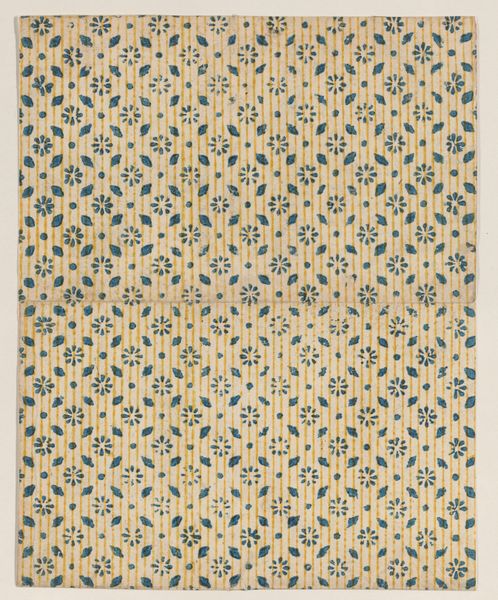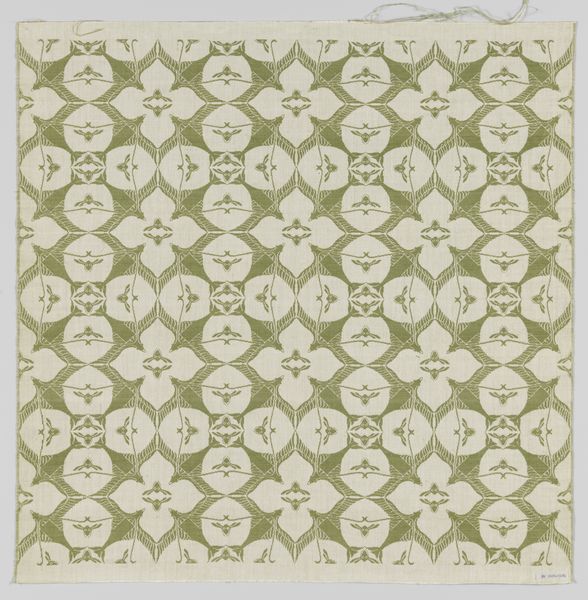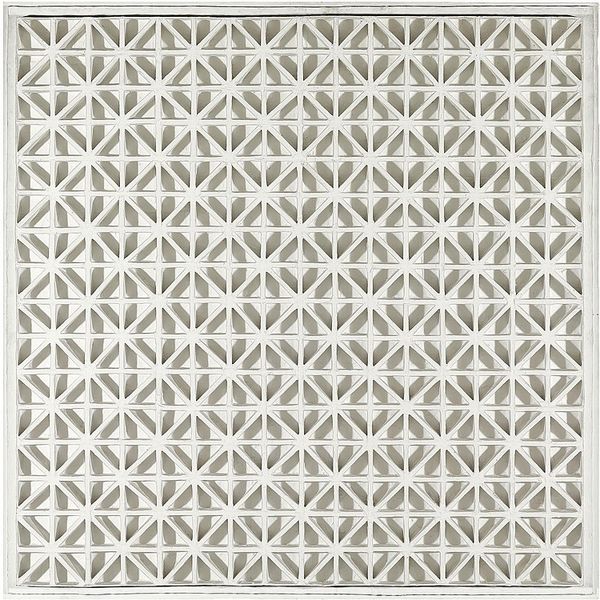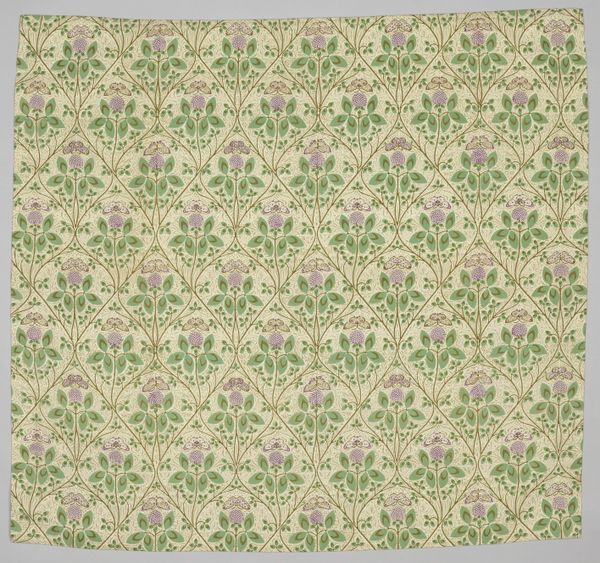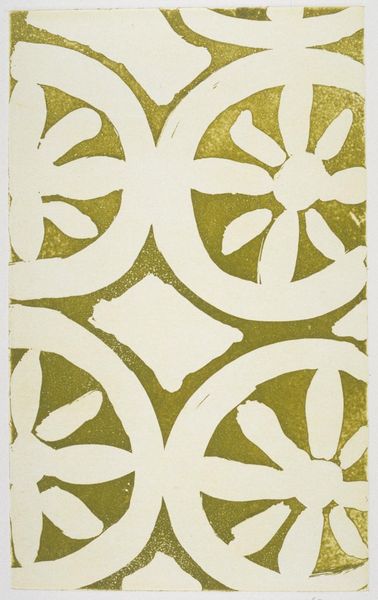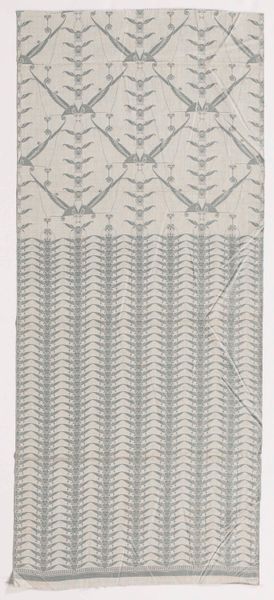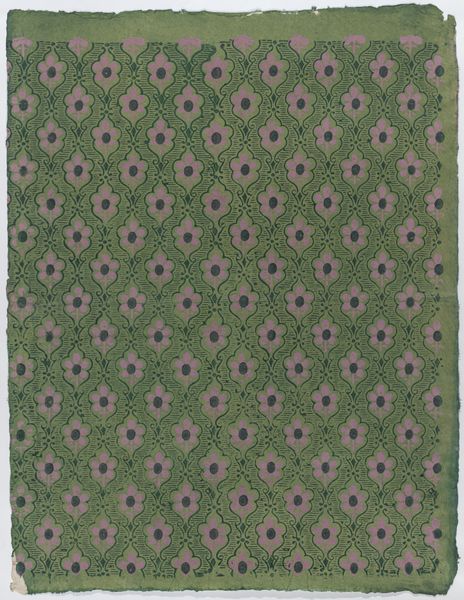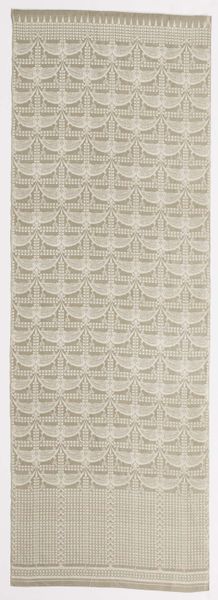
textile
#
organic
#
art-nouveau
#
pattern
#
textile
#
geometric pattern
#
organic pattern
#
vertical pattern
#
pattern repetition
#
decorative-art
#
imprinted textile
Dimensions: height 150.0 cm, width 57.5 cm
Copyright: Rijks Museum: Open Domain
Curator: Standing before us is "Wandbespanning," a textile wall hanging crafted by Chris Lebeau between 1911 and 1915. It's currently housed here at the Rijksmuseum. Editor: My immediate impression is one of serene repetition. The subtle green palette and symmetrical design create a calming, almost hypnotic effect. The eye is drawn into the patterns. Curator: Indeed. Lebeau was deeply engaged with the Arts and Crafts movement. This textile exemplifies that, blurring the lines between art and functional design. Consider the labor involved in creating such a repeating pattern; the design, the carving of the block, the printing, each requiring skill and time. Editor: The repetition is what I find fascinating. The pattern is organic, yet geometrically rigid. The color story, while muted, is quite effective at maintaining visual interest. Can you speak to the construction of this object? Curator: Certainly. The specific process used here allows the pattern to repeat seamlessly, emphasizing not just aesthetics, but also efficient production. Textiles were essential in everyday life; creating them more beautifully elevates the domestic experience. The means of production becomes a subject in and of itself. Editor: Yet, doesn't that functional aspect detract from its artistic merit? Should art aspire to mere utility? I can acknowledge this, but also observe the harmonious interplay of lines and shapes, the composition creates a balance between complexity and simplicity. Curator: Not at all! The elevation of craft is the point. Recognizing artistic value in utilitarian objects challenges hierarchies. Lebeau provides access and allows greater enjoyment to greater portions of the population, no? Editor: Perhaps we can consider it in two parallel processes then. While it indeed offers accessibility, let’s admire for a moment the artist’s deployment of Art Nouveau principles to create a sophisticated visual experience beyond utility. Curator: A fitting compromise, I think. By examining its creation and historical context, alongside its formal attributes, we can get better access to both art history and socioeconomic factors during the piece’s creation. Editor: Yes. The beauty resides not just in its aesthetic qualities, but in the fusion of utility and aesthetics within its historical timeframe.
Comments
No comments
Be the first to comment and join the conversation on the ultimate creative platform.
